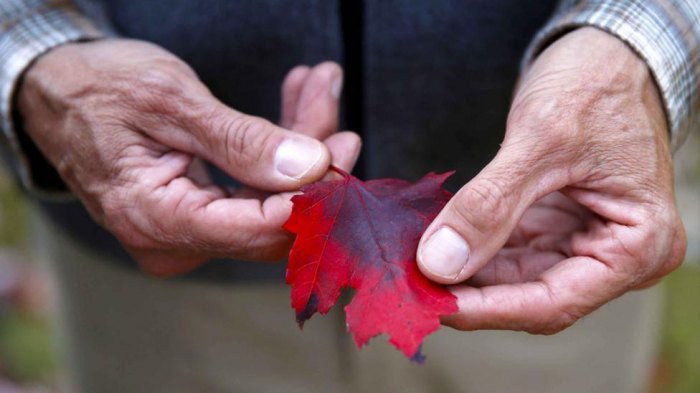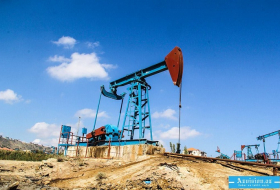Cities usually come at the price of green space. Since prehistoric times, humans have busily cleared forests to make way for settlements. But increasingly, greenery has been edging its way back into modern urban landscapes, and for good reason. Vegetation helps cities become better habitats for wildlife and for people, and it helps to make city air safer.
Trees have a remarkable range of traits that can help reduce urban air pollution, and cities around the world are looking to harness them. In January 2019, the mayor of London announced that 7,000 trees would be planted before the end of the following year. Meanwhile, China’s Hebei Province, home to Beijing, has been working on a “green necklace” of plants that could help reduce pollution from factories that surround the capital. And Paris is planning an urban forest that will encompass its most iconic landmarks in an effort to adapt to climate change, and also improve the city’s air quality.
While trees are generally effective at reducing air pollution, it isn’t as simple as the more trees you have in an urban space, the better the air will be. Some trees are markedly more effective at filtering pollutants from the air than others. To make the most difference in air quality in a street or city, it has to be the right tree for the job.
And, of course, trees are only a way to filter pollution; better is to reduce emissions of pollutants in the first place, notes David Nowak, a senior scientist at the US Forest Service who has been studying plants’ contribution to air quality for 30 years. “But trees can be of great help,” he says.
Trees can improve air quality in direct and indirect ways. Indirectly, they can help by shading surfaces and reducing temperatures. If buildings are shaded by trees, it reduces the need for conventional air conditioning, and the emissions of greenhouse gases that come with it. Plus, lower temperatures decrease risk of harmful pollutants like ground level ozone that commonly spike on hot days in urban areas.

Air pollution in Beijing regularly exceeds 10 times the WHO recommended levels, but tree-planting schemes are being deployed in an attempt to cut pollution (Credit: Getty Images)
But trees also play a vital role in directly removing pollutants from the air. Plants are often seen as the “lungs” of an ecosystem because they absorb carbon dioxide and emit oxygen, says Rita Baraldi, a plant physiologist at the Institute of Bioeconomy of the Italian National Research Council. But they also act as an ecosystems “liver” too, filtering atmospheric pollutants like sulphur dioxide and nitrogen dioxide through their leaves.
Trees are particularly effective at removing particulate matter (PM), Nowak adds. PM comes in the form of tiny particles of organic chemicals, acids, metals and dust, emitted from fossil-fuel-burning vehicles and factories, as well as construction sites. The largest of these particles measure up to 10 micrometers across (known as PM10s), which is around a fifth of the width of a human hair. Then there are PM2.5s, measuring 2.5 micrometres across, and even smaller nanoparticle pollution.
Fine particulate matter can easily penetrate into human respiratory system, causing lung and cardiovascular diseases or exacerbating respiratory illness. It has also been linked to inflammation and heart disease. By one estimate, 8.9 million deaths a year globally could be attributable to exposure to outdoor fine particulate matter.
Clearing the air
From an urban planning perspective, plants act as a readily available set of PM purifiers. “Trees can help reduce PM in two main ways,” says Prashant Kumar, the founding director of the Global Centre for Clean Air Research at the University of Surrey.
The first one is dispersion – by crashing into trees and plants, concentrated clouds of minuscule particles get dispersed and so diluted by the air, decreasing the risk of inhalation by humans. The second one is deposition. PM can easily get trapped in the waxy, hairy leaves of trees and shrubs. When it rains, most of these particles are washed away by water into drains.
“The extent to which each species performs such filtering activity depends mostly on canopy size, leaf size and leaf structure,” says Baraldi. Bigger canopies can trap more particles than smaller ones, and larger leaves can trap more pollutants than small ones. When it comes to leaf type, it is those with rough, rugged and hairy surfaces that act as the “best filters” for PM.

London plane trees, which line the Victoria Embankment, emit high levels of volatile organic compounds, which can be bad for urban air pollution (Credit: Getty Images)
Recent research suggests that tiny hairs on plant leaves in particular may play a big role in trapping the solid and liquid particles that make up PM. In one recent study, Barbara Maher and colleagues at the University of Lancaster tested the ability of nine tree species to capture PM in wind-tunnel experiments. Silver birch, yew and elder trees were the most effective at capturing particles, and it was the hairs of their leaves that contributed to reduction rates of 79%, 71% and 70% respectively. In contrast, nettles emerged as the least useful of the species studied, though they still captured a respectable 32%.
Alpine air
Conifers, like pines and cypresses, are also good natural purifiers. In 2015, Jun Yang, an urban ecologist at the Center for Earth System Science, Tsinghua University, in Beijing, ranked the most frequently occurring species in cities based on their PM 2.5 absorption capacity. The ranking also took into account species’ ability to survive in urban contexts, and any negative impact on air quality, such as the production of allergens, and of volatile organic compounds (VOCs) – a set of substances that can interact with gases emitted by vehicles, like nitrogen dioxide. In the presence of sunlight, these reactions can contribute to ground-level ozone, which is harmful to human health. The effects can be considerable; when a heatwave hit Berlin in 2006, the ozone created by the interaction of plants’ VOCs and vehicles’ pollutants resulted in sudden decreases in air quality.
To Yang’s surprise, his ranking system showed that the most widespread species of trees were not the best pollution filters. “Of the 10 most recurring species, only the London plane, silver maple and honey locust ranked above average,” he says. It was conifers, such as pines and cypresses, that were the best pollution filters. Planting conifers, Yang concluded, would make most sense in polluted cities like Beijing to reduce PM2.5s. The Chinese capital routinely reports PM levels above 125 micrograms per cubic meter, more than 10 times greater than World Health Organization recommended threshold of 10 micrograms per cubic meter.
The reason for conifers’ success in reducing PM is partly down to their canopy structure – the dense canopy of needle-like leaves typical of conifers is very effective at trapping pollutants. And their seasonal biology helps too. “Conifers offer the best PM reduction because they are an evergreen species,” Nowak says. Unlike deciduous trees, who lose their leaves during winter, evergreen species act as year-round filters. “But that does not automatically make them fit for any context.”

Evergreen trees can be excellent pollutant-trappers and can work all year round, unlike their deciduous relatives (Credit: Getty Images)
The issue with conifers, Nowak says, is that many species can be very sensitive to salt levels in soils, which tend to be high in urban areas especially where salt is used to de-ice roads. Compounding the issue, conifers’ year-round canopy can block sunlight from melting snow and ice, which can lead to road traffic problems in cities subject to cold temperatures, Nowak notes. These two drawbacks to conifers were also cited by Yang as caveats to be considered in his recommendations.
Troubling trees
Some deciduous species can also come with side-effects, Nowak says. For example, trees commonly found in cities of the northern hemisphere – such as poplars or black gum trees – can emit high levels of VOCs.
“Ideally, you want to be able to identify species that can maximise PM absorption but minimise ozone-precursor production,” says Margarita Préndez, an organic chemist at the University of Chile, who has studied how different species affect air quality in Santiago. Nowak cites conifers like hemlocks, junipers and deciduous trees like elms, horse chestnuts and basswood as examples of low-VOC plants.
“Based on data from Santiago and other Chilean cities, native trees emit fewer VOCs than non-native trees,” Préndez adds. In Santiago, non-native species like the Prunus and the London plane tree can produce up to 30 times more VOCs than native species.
But this rule might not apply everywhere, and Yang says that you can’t generalise when it comes to endemic versus introduced trees. “Some of the best species for air pollution reduction are non-native,” he says. “We should not rule them out for ideological reasons.”

Yew hedges make good roadside additions to reduce pollution, but they also have poisonous leaves and berries which means they are not suitable everywhere (Credit: Getty Images)
It’s a finely balanced business to find the right trees for a city. But that’s just the start, says Nowak. The next question is where to plant them.
Many well-meaning schemes have suffered because of poorly planned planting. “Some cities like Beijing and Mexico City have planted trees pretty far from the city centers,” says Rob McDonald, lead scientist at The Nature Conservancy. “That may not be that beneficial.”
McDonald, who works with municipal governments to manage urban forests, says that as a rule of thumb, trees need to be planted close to where people – and sources of pollution – are.
And as wind direction and landscape structure can affect the way pollution moves, trees need to be planted accordingly, Nowak adds. In narrow streets surrounded by tall buildings, like those of downtown Manhattan, airflow can trap pollutants close to the ground. Planting tall trees with big canopies can make matters worse in this situation by preventing the pollution from dispersing. A recent tree planning scheme in Beijing ended up trapping pollution in certain areas, partly for this reason.
Kumar and his team recently issued specific recommendations for urban planners on this point. Hedges or green walls are generally to be preferred to trees in narrow streets flanked by tall buildings. While on broad roads surrounded by low-rise buildings, like those typical of the American suburbs, air can flow more freely so there is less risk of trapping pollutants, making both trees and hedges viable options. Examples of roadside hedges that work well include viburnum, red tip photinia, privet and bay laurel, Baraldi adds.
Ensuring biodiversity is also essential, even if one tree species is a standout winner in terms of its pollutant-trapping abilities. Kumar recommends that no more than 5-10% of an urban forest should be made of the same species or family. And a final factor that Nowak notes is that one should be realistic about maintenance and lifespan – plants that require little attention and that will last several decades are to be preferred.
Through the maze
With such a breadth of variables to keep in mind, knowing which species will work best in a particular place can be challenging. “There is a lot of conflicting advice and wishful thinking on the benefits of urban trees to mitigate air pollution,” says Stephanie Carlisle, an urban ecologist at the University of Pennsylvania who studies the interaction of natural and built environments. “Plus, it is really difficult to measure it.” Indeed, some studies report that plants can reduce PM that reaches indoor spaces by as little as 1% while others claim reduction rates of 60%.
But scientists are building tools intended to help urban designers identify the most suited species to a particular location. For example, a free software provided by the US Forest Service, iTree species, ranks species based on a set of variables including air-pollution removal abilities, carbon storage and VOC emissions.

Choosing the right tree includes being realistic about its life-expectancy and maintenance requirements (Credit: Getty Images)
The town of Oakville in Ontario, Canada, was one of the earliest adopters of iTree, and is a good example of just how difficult it is to get the balance right. The municipality found that, according to iTree, the Norway maple provides more benefits to air quality than any other tree. But because Norway maples already accounted for more than 10% of urban canopy, the city refrained from planting more of them, to preserve biodiversity. However, municipality also stopped planting hawthorn after iTree revealed it was of little help for air quality. Hawthorn was gradually replaced with American elms – but then they turned out to be sensitive to Dutch elm disease.
As Nowak explains, the species ranking in the iTree tool gives a general indication of the best species, without taking much local context into account. “Species that come out on top may be invasive or not well suited for that particular ecosystem,” he says. “So it’s always best to check with local experts to determine which species will perform well based on local conditions.” Next, Nowak and his team plan to go further to study how local ecosystems affect how suitable a tree is for planting, and how best to harness its natural characteristics.
The importance of local context is a point echoed by Kumar. Earlier this year, he co-authored a guide to help urban planners select species that can help to mitigate roadside pollution. He listed 61 species that have 12 traits suited for air-pollution reduction, such as rugged leaves. The guide also accounts for “undesirable” variables, such as pollen, VOCs, and high-maintenance species. “Evergreen oaks, pine species, and common yew were selected as potentially most effective,” Kumar says. “Because they are relatively tolerant of pollution, evergreen and include a suite of beneficial leaf traits.”
Such advice is not just for urban planners. Citizens can now count on an expanding range of toolkits to help them with planting choices. Jennifer Gabrys, a sociologist at the University of Cambridge, developed a digital tool that can let anyone play a role in reducing air pollution. Called Phyto-sensor, and developed while Gabrys was previously at Goldsmiths University, the tool lists plants that have proved effective at PM reduction, like wallflowers and ivy, and provides suggestions on planting locations.

More green spaces in general can help with air pollution in cities, including plants other than trees in parks and gardens (Credit: Getty Images)
But ultimately, it is context that determines if a species is beneficial or detrimental. “Even ‘best-performing trees’ may not work in some cases,” Kumar says. “For example, we would not recommend planting yew near school playgrounds because it is poisonous.”
If all this proves anything, it is that clutching to one tree as a fix-all is not going to get you very far. “Some designers have a tendency to think in terms of objects rather than a complex ecological system,” says Carlisle. “But without an holistic understanding of urban ecosystems, the risk is to do more harm than good.”
In that sense, tree-planting to tackle pollution is like many other aspects of urban design – the key to success lies in understanding local and environmental nuances. It’s what will determine whether urban trees are a breath of fresh air, or a major headache.
BBC Future
More about: airpollution
















































